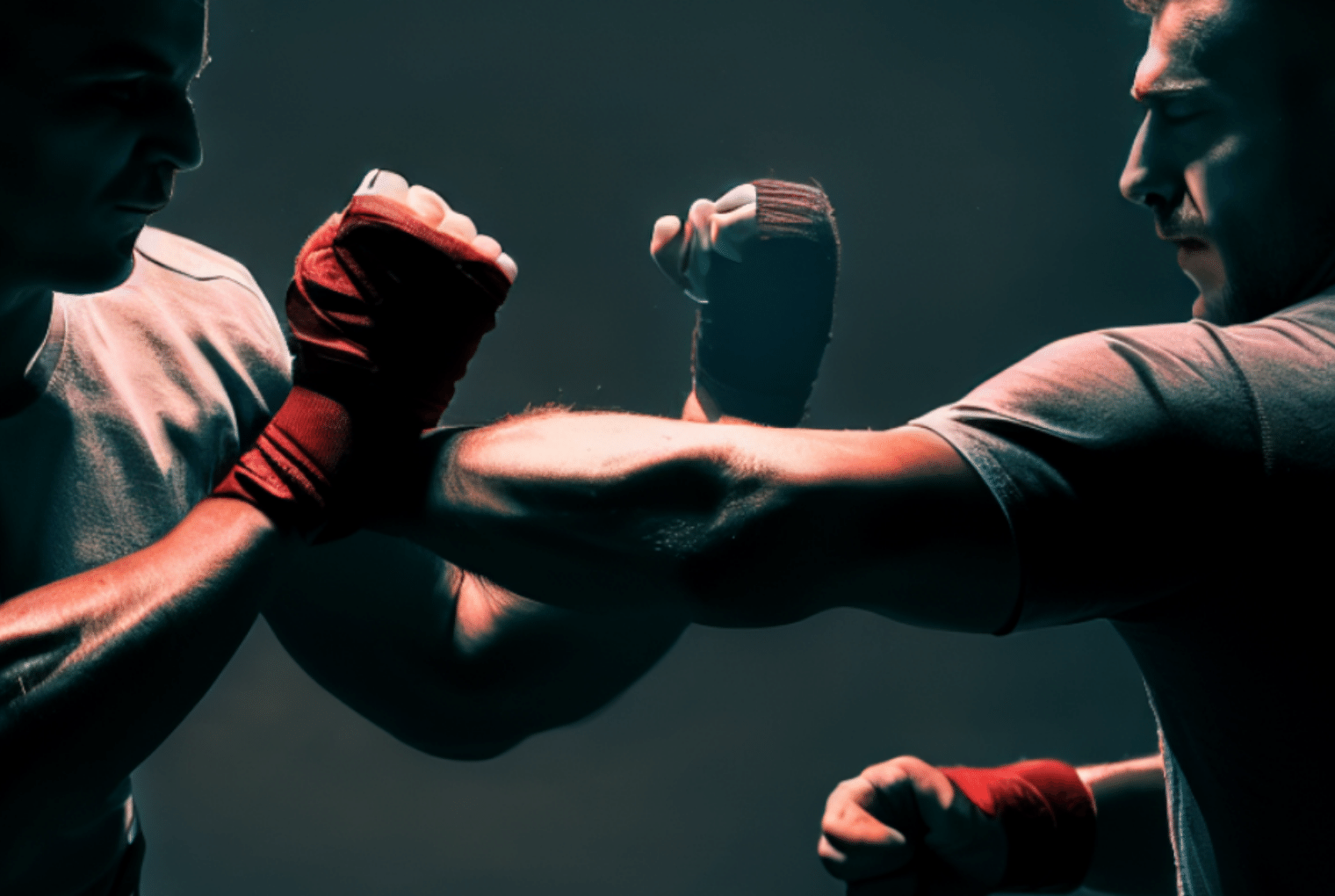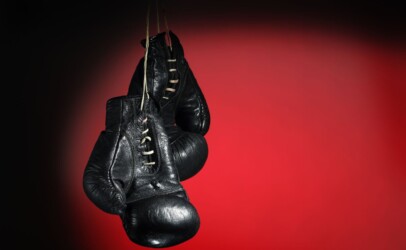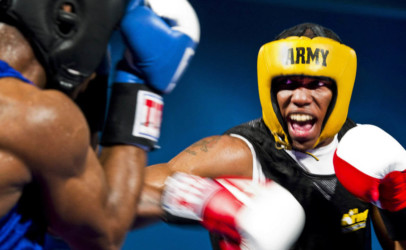Some think it is inappropriate to consider boxing as a martial arts defense practice, but the truth is that if we think of martial arts as a combat system based on discipline, strategy, and technique, then boxing for self-defense falls within this definition.
Boxing, as a combat system, is based on using fists to hit an opponent. But it’s not just about throwing punches randomly. It requires discipline to learn and perfect techniques, strategy to plan attacks and defense, and technique to execute blows with precision and power.
In boxing, attack and defense skills are taught, and techniques are learned to improve your punches, dodges, and blocks, which will undoubtedly help you increase your defense capabilities in any dangerous situation.
Boxing training will also improve your fitness, strength, breathing, coordination and agility. These are essential conditions to react more effectively to an attempt at physical aggression.
Learning basic boxing defense, which is based on effectively using punches and dodging those blows that can neutralize or defeat us, is essential when confronting a dangerous physical situation. But we must also keep in mind that martial arts defense is not limited to just knowing fighting techniques.
A popular adage says that the best fight is the one that is avoided; hence a fundamental part of martial arts defense training is the development of observation, concentration, avoidance, and effective communication skills, which will allow us to anticipate and prevent dangerous situations, and act more assertively when they arise.
Boxing for self defense: what you should know
Boxing and self defense are two closely related terms. Boxing punches, footwork, and defensive and dodging maneuvers are practices we can transfer to real life to protect ourselves when necessary.
There are many advantages of boxing as a martial arts defense mechanism. Here, we leave you a series of reasons why boxing for self defense is an option that you should consider if what you are looking for is to learn self-defense techniques.
- Enhance your ability to hit: boxing allows you to learn how to deliver more powerful blows and techniques and direct them to certain areas of the body to neutralize your attacker. Punches such as the jab, the cross, the uppercut, and the hook will be very useful in dangerous situations.
- Agility: boxing allows you to learn how to move your feet better to strike more effectively, to move away from the opponent, and to avoid the blows they may throw at you. Creating distance between you and your attacker will help you buy seconds in which you can either attack more effectively or escape, if necessary.
- Improve your physical endurance: boxing is a complete workout that tests your strength, endurance, power, and breathing. Good physical fitness will increase your chances of effective defense against any attack and can be decisive when confronting dangerous situations.
- Self-confidence: boxing helps you be more disciplined and gives you more mental strength. By seeing how your physical abilities improve, you will have much more confidence to handle potentially dangerous situations with more intelligence and skill without feeling diminished by any rival.
- Concentration and focus: to be effective in boxing, you must be aware of your body, the space surrounding you, the situation in general, and a very clear mindset. When practicing basic boxing defense, this will be very important. More focused criteria will allow you to identify potential threats and react quickly and appropriately.
Basic boxing defense: learn some techniques
Below, we summarize some basic boxing defense techniques that will be useful in self-defense situations. If you practice them constantly, you will improve your skills, become a forceful boxer, and avoid the mistakes that can determine if you lose a fight.
- Master the basic punches: it is essential that you learn and master the basic boxing punches: the jab, the cross, the front hook, the back hook, the cross or direct blow, the crochet or side blow aimed at the rival’s head and the hook, which seeks to hit the torso. It is recommended to practice each movement slowly until you master the mechanics, and then you can add power to it.
- Blocking: With this basic form of defense, you will learn how to block incoming blows. If an opponent throws you a jab (a punch directly to the face), you must raise your glove and forearm to stop that punch.
- Parry: This advanced form of blocking allows you to deflect the blow away from you. You would use the glove or arm to push the punch to the side.
- Slide: This technique involves moving your head to the side to avoid a punch. For example, if an opponent throws a jab at your face, you will quickly move your head to the side so the blow does not hit you.
- Crouch or Bob and Weave: As the name suggests, the idea is to bend your knees and move your body to avoid hits. For example, if an opponent throws a hook (a punch from the side) at you, you must duck to prevent your opponent from hitting you. Additionally, you can move to the side to avoid other blows.
- Clinch: With this defensive move, you hold onto your opponent to prevent them from throwing punches at you. This is often used when a fighter is tired or injured to buy extra time.
- Be always ready for the attack: since the best way to defend yourself is a good attack, any boxing connoisseur knows that the basic recommendation of boxing for self defense is always to keep your hands up, your chin down, and your eyes fixed on your opponent. Letting your guard down puts you at risk of taking a neutralizing hit.
In addition to constant training, a lot of literature is available online that will help you in your goal of using boxing as an effective self-defense system.

Types of boxing and self defense
There are many types of boxing with specific training to improve your self-defense capabilities. Among them, we can mention:
- Western boxing: it is the most well-known and practiced type of boxing throughout the world. It is based on the use of fists to hit the opponent. Western boxing is a complete combat system with attack, defense, and dodging techniques.
- Thai boxing: also known as Muay Thai, is a martial art of Thai origin that combines boxing with kicking, kneeing, and elbow techniques. Thai boxing is a very effective combat system for self-defense, as it allows you to use a wide variety of techniques to neutralize an attacker.
- Kickboxing: This is a martial art that combines boxing techniques with kicking techniques. Kickboxing is a very dynamic and effective combat system for self-defense.
- Street boxing: This style combines techniques from different combat disciplines and martial arts to adapt to fighting situations in the urban environment. It focuses on direct attacks, basic defenses, and simple maneuvers to neutralize the opponent quickly.
Learn about other martial arts defense practices you can use
As personal safety has become one of the most constant concerns in our world, acquiring self-defense skills has become necessary for both men and women.
In addition to boxing, there are other defensive martial arts that will teach you effective personal protection techniques. Next, we explore some of them.
Krav Maga: This system of self-defense and hand-to-hand combat, originating in Israel, is based on efficiency and practicality and focuses on quick and effective techniques that seek to neutralize aggressors as quickly as possible. Krav Maga teaches practitioners how to defend themselves against weapon attacks and multiple opponents and emphasizes the importance of mental control and quick decision-making during violent encounters.
Brazilian Jiu-Jitsu (BJJ): It focuses on ground grappling and submission techniques. It is a very useful martial art if you find yourself in a situation where your opponent is bigger or stronger than you. Leverage, choke, and grappling techniques are taught to subdue the opponent and control the situation.
Muay Thai: This full-contact sport uses fists, legs, knees, and elbows. With it, you can develop strength, speed, and endurance. It is very beneficial for self-defense due to its emphasis on precision and power of blows.
Taekwondo: Besides improving physical fitness and flexibility, this sport teaches techniques to maintain distance and use quick, precise kicks to incapacitate the opponent. Mental discipline and constant training allow Taekwondo practitioners to react effectively to dangerous situations.
Judo: If you are looking to learn self-defense techniques, judo teaches practitioners how to use the weight and strength of an opponent against them.
Both boxing and any martial arts will be an excellent option for learning self-defense techniques. But always remember: the key to successful self-defense, in addition to choosing and learning the appropriate technique, is constant practice, concentration, and choosing the right professionals for your training.
Also, responsibility and ethics must be kept in mind when using these personal protection techniques and the legal implications that may arise from inappropriate use of them.





